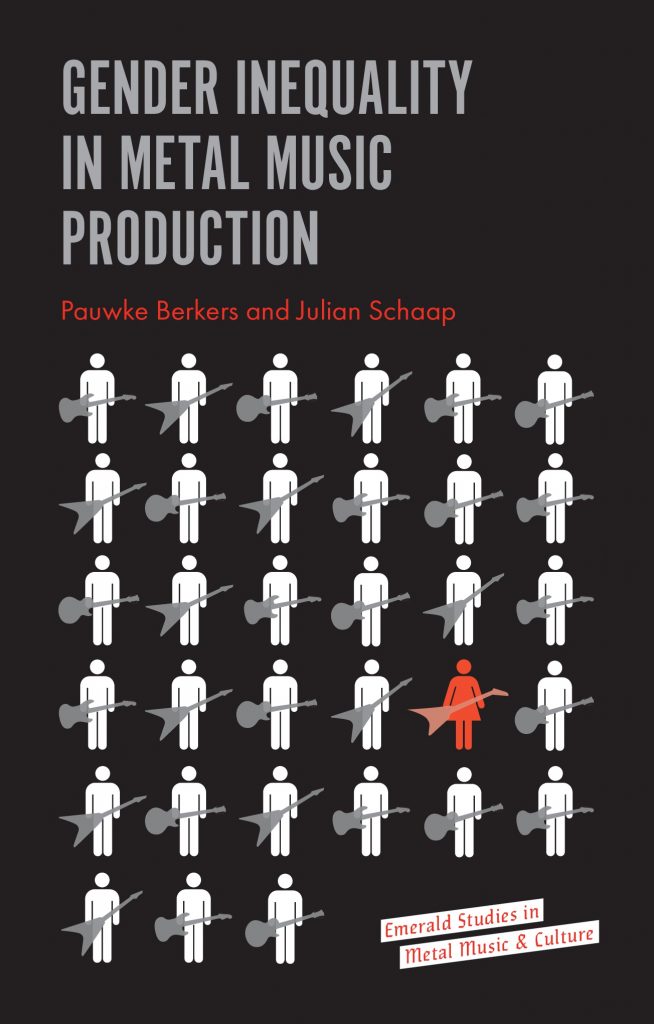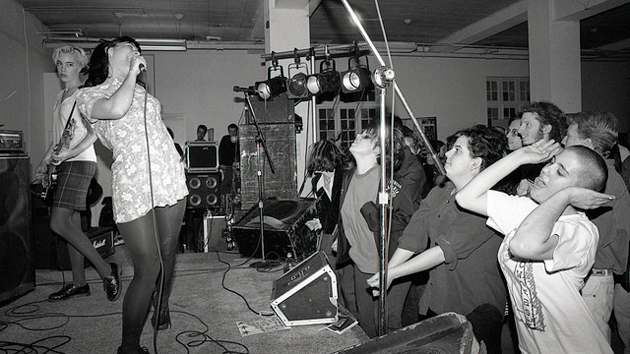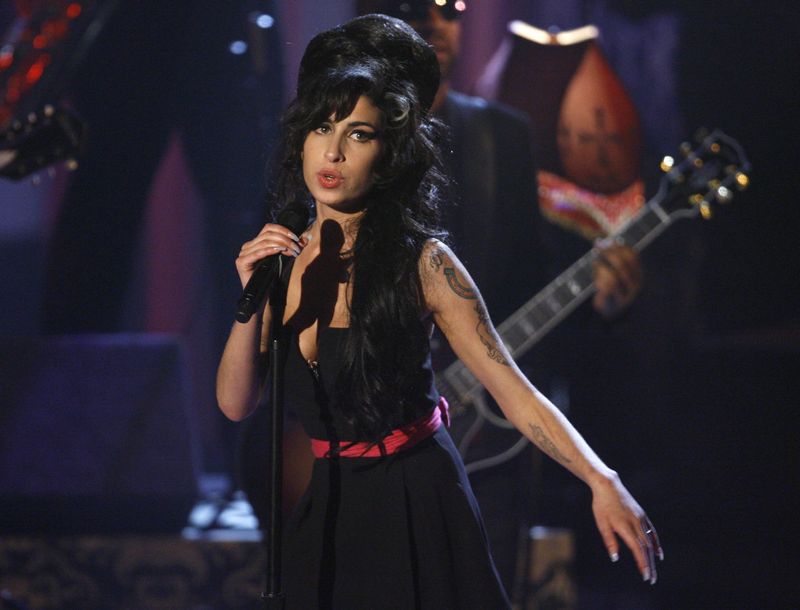Research Interview: Pauwke Berkers
Pauwke Berkers is the chair of the RASL Research Group, and Assistant Professor of Sociology of Art and Culture in the Department of Arts and Culture Studies, Erasmus University Rotterdam. His recent research has led to a publication, made with Julian Schaap, titled Gender Inequality in Metal Music Production.

For over four decades, scholars have been investigating male dominance – both symbolically and numerically -within popular music. The heavier genres of popular music, metal music in particular, have been male dominated spaces, which are difficult to navigate for women participating as fans, musicians, or both. Studies on gender inequality in metal music have convincingly demonstrated how gender dynamics shape the reception of metal music and metal scenes all over the globe. Yet, they shed relatively little light on the extent of and reasons for metal music’s male domination from a production perspective. This book fills this gap, offering is a systematic and large-scale overview of gender inequality in metal music production. In other words: how many women – compared to men – are participating in metal bands and what are the causes for the differences in participation?
He talks to Content Editor, Amy Pickles about his motivations to develop his research and further the discussion around gender inequality in the music industry.
Pauwke Berkers: An article that has inspired me in the direction I want to develop our research is Reducing Gender Biases In Modern Workplaces: A Small Wins Approach to Organizational Change, written by Professor of Sociology and Organizational Behavior at Stanford University, Shelley J. Correll.
The arguments Correll makes, that I also want to voice, is that academics often describe problems but know very little about how to solve them. She defines this lack as being caused by academics fear towards researching solutions because they know they can never solve it completely. When I started writing the proposal to develop our research, I realised I’m part of the problem. I’ve also been describing these things again and again, but I know so little about it. So I thought ok, I need to change this, and Correll too states that she is trying to get over this fear and work to make solutions.
In my research I am seeking to tackle problems, not simply describe them.
When examining music we have extensive research about about gender inequality as an outcome of sexism, stereotyping, tokenism, bias – but there is much less research on how to address inequality.
Correll gives ways to change an institution to be more inclusive. Some focus on the individual – courses, implicit bias testing – but the issue here is that addressing issues on an individual level leaves the structure intact, and the music industry is very informally organised. Correll’s individual changes will work better within the formal setting of a university, but the music industry really runs through networks, not formal procedure. If that network is already very male dominated its difficult for women to enter. It’s also more difficult to evaluate quality when criteria are not clear. This is often the case in the art world because, what is a good artist? It’s very difficult to say.
In these gaps of ambiguity, stereotypes occupy the space.
There is a lot of evidence as to why we perpetuate stereotypes, in the movie industry, where there is a huge risk in whether a movie will be successful. The industry tries to reduce the risk by relying on conventions. An action movie with a female star, is not very conventional, so therefore more of a risk.
Amy Pickles: At what point are you able to act on the changes that Correll suggests?
PB: The individual strategies that Correll points to, and I described, would need to be used in combination with strategies that tackle the music industry as a whole. We need to make sure we are not trying to fix the individual, or put the responsibility of gender equality success upon women. You need to address everyone involved. For example, a highly skilled, confident women in the music industry may be perceived by men to be aggressive, and they dismiss opportunities to work with them on this sexist basis.
How skills are evaluated is very gendered.
AP: What do we need to use in combination with individual changes?
PB: I can give you an example. There is an organisation based in the UK called Keychange, an international initiative which transforms the future of music whilst encouraging festivals and music organisations to achieve a 50:50 gender balance by 2022.
Although, you can critique this quota as something an organisation will simply carry out in order to tick a box, I think that in different stages, or in different combinations, these things can work. Keychange is working to raise the question of gender equality again, because in the music industry this question was relegated as postmodern nonsense, at least by some people. This quota breaks open the debate. It’s a very crude measure but it keeps you thinking, and now a lot of music festivals have signed the pledge, so things are changing.
AP: And people keep talking about it. This feeds into a question I have about a key element of your book, quantitative data. As well as explaining the problem, how can numbers be used to create change?
PB: To go back to our motivations in beginning our project, we initially noticed that the idea of metal music studies is becoming more popular, more people are researching metal. Globalisation of metal is one of the main topics people have been writing about but we also found a lot of small scale studies, such as studies on the scene in Toronto or analysis of some festivals. These show gender inequality in the outcome – we did not find very many women in the metal scene, definitely not participating outside the role of vocalist – and we learnt about several mechanisms leading to gender inequality, but generally this inequality is assumed and not proven. We thought, let’s make a small book where we actually get the numbers. How bad is it?
AP: So from beginning this unique project, are you now trying to look at the cause?
PB: We know a lot about how women are underrepresented in media as musicians, on the radio, in the canon, everywhere. We know a lot about what mechanisms play a role, a major example being tokenism – if you’re part of a minority you become more visible, so you’re often at times evaluated on your appearance and not so much on your abilities. You have this male gaze focused on you, you are not taken seriously. We know what plays a role. We know there are more individual factors – socialisation, identity work, we know differences in interaction play a role, how people deal with gender.
The philosopher and gender theorist Judith Butler talks about gender performance. In sociology there is a similar theory called Doing Gender by sociologists Candace West and Don H. Zimmerman, it’s quite similar but with the small difference that the sociology approach assumes that there is a normative institutional gender structure to which people respond. The idea that you can do gender in your particular way, but when you do you always keep in mind what the overall societal norms are, and how people will respond. They talk about it in terms of accountability. West and Zimmerman focus more on structure, whereas Butler focuses on agency, and creates more room for non-binary identities.
AP: Is that something that you want to incorporate into your research?
PB: Yes. Definitely. We talk a little bit in the book about how dominant the male / female binary is. We discuss that we want to look at men, women and beyond, we use this term to account for all other identities. In our research area, this has not been discussed so much, particularly not aspects of intersectionality, which is something else we want to incorporate.
Intersectionality:
Intersectionality is an analytic framework which attempts to identify how interlocking systems of power impact those who are most marginalized in society. Intersectionality considers that the various forms of what it sees as social stratification, such as class, race, sexual orientation, age, disability and gender, do not exist separately from each other but are complexly interwoven.
We talk about Violence, an American band that, for recordings, is composed singularly of Olin Caprison. Their first official release was REPTILE/Hand Me Downs from Heaven, a menacing combination of romanticism, juke, death metal, and gothic rock, and GLOSS a transgender punk band from Olympia, their name standing for Girls Living Outside Societies Shit, before returning to a broader sociological perspective.
PB: Of course I’m a sociologist so I’m generally an overview kind of guy. That’s typical, and different from other types of critical studies. In sociology it’s much more about looking at music to say something about dynamics in society and the different types of mechanisms at play.
We are discussing working with Atria, the Institute on Gender Equality and Women’s History, in the Netherlands. They are working on a project called Work in the Future. So they are working with an organisation called Emancipator, they are moving forward on gender equality justice and objectives. Unequal gender relations are a main cause for many problems in the world. Women have gained in their struggle for empowerment, equality and justice. It’s time for men to act and change in order to become part of the solution. While Emancipator’s focus is in education and the job market, their work is useful to us because, from a sociological perspective, the mechanisms at play here repeat in music.
What makes the music industry interesting is that women are very visible. They are role models, in some cases idolized, while under extreme pressure to conform to gender standards by the media and society. You are bombarded by comment and criticism as a female role model, the mechanisms that Work in the Future tackle are much more extreme In music than other forms of work not connected to the entertainment industry.
It’s important to work with organisations like Atria because research should have an impact on society. Of course this pushed at the university, but music is fun and involved in the lives of many different types of people. It’s important to me, as an academic, to present what I’ve done outside of the campus, the university setting.
Another way to get out of the University has been to work with buma.stemra, the organisation that gives out copyrights in the arts, mostly in music but also film. As an artist you can register your work and then when it gets played on the radio, you earn some money from your copyright. We worked with them before to publish a small report. Through them we interviewed 300 people, almost 75% of women described the music industry as a mans world, which is even higher than I thought it would be. buma.stemra cater for the whole music business. So they want female musicians, female writers, female composers to be represented. That brings in the economic aspect to research in gender equality.
Something funny that we found connected to the economy now is that because djing has become so popular in the last decade, there are less guitars being sold. Now guitar makers are focusing on women to buy their products, so suddenly women have to save rock n roll, which I have to say is pretty ironic.
AP: Why do you think society listens to statistics?
I’m now editing a special issue for the Dutch Journal of Gender Studies, and I did an interview with three women working in the music sector, and they also say sometimes stats are very important because men don’t recognise the female experience as being genuine, but when you can come back to them with stats and numbers then this is something they can’t refute. Different audience’s require a different type of convincing method.
But you have to have figures and the story. If it’s a personal story people can dismiss it as being allegorical evidence, but if you have some stats which look a bit more scientific, at least in the past people would believe it. Now I’m not so sure, science has also lost some credibility! Sometimes it helps when a man tells people this, it’s good that they talk about these issues otherwise the pressure sits on the shoulders of the minority groups.
AP: This makes me think about the essay On Emotional Labour, Everyone Has To Learn Everything written by Nana Adusei-Poku for the longterm project WdKA Makes a Difference. She writes;
“leaving emotional labour to educators of colour is part of the problem of diversity politics, it is carried by systemic racism.” She describes being caught in a “violent cycle of resignation, frustration and precarity.”
I think we underestimate how exhausting it is to constantly have to explain your position and be the one to speak out about discrimination. I appreciate that you use your position to do this. Were you researching gender in other areas before this?
PB: Yes. My master thesis was about punk and feminism in the 1980’s in the Netherlands. I interviewed 19 women who were involved in punk bands at this time. Some were all women bands, some were mostly male with female leads. I went all over the country to interview them.
AP: Have you always been a feminist?
PB: Good question! I was always really into Riot Girl stuff, you know like Bikini Kill and everything. I like this combination of aggression and gender questions. People have asked me this question before and I don’t have a specific answer, but unequal representation has always figured in my research.

Another article of mine, Rock and roll or rock and fall, compared media coverage of Amy Winehouse and Pete Doherty. They both have this extreme rock n roll lifestyle, yet, newspapers evaluate them totally differently. Pete Doherty is seen as a great guy, a real man who takes risks, while Amy Winehouse is presented as insane, hysterical, wasting her voice and her career. We drew on this idea from Raymond Connell about hegemonic masculinity and emphasised femininity. Particularly this idea that journalists are complicit in holding Pete Doherty up as a model rock star, and Amy Winehouse is often talked about in term of concern, so it’s a very patriarchal and paternalistic perspective of a female star.
Our findings show how music journalists use relational complicit practices –admiration/justification/negation of male and victimization of female enactment of hegemonic masculinity – to maintain masculine monopoly over the archetypical rock and roll lifestyle.

But now I realise this becomes repetitive. We know what’s happening – it’s always the same thing. So I’m trying to make that shift to find solutions. I’m working to extend popular music studies in this department, it’s my goal to extend the discourse in popular music. I am keen to develop work through RASL with Codarts, and trying to get more people interested.
I look to the Centre for Contemporary Culture Studies, in Birmingham UK, for inspiration in how to develop strong studies in popular music at university level. People like cultural theorist and feminist Angela McRobbie, and sociologist, cultural theorist and activist Stuart Hall, one of the founding members of the centre in Birmingham, and the concept of British Cultural Studies. Subculture: The Meaning of Style by Dick Hebdige, also informs how and why I want to incorporate unusual cultural references into the curriculum.




